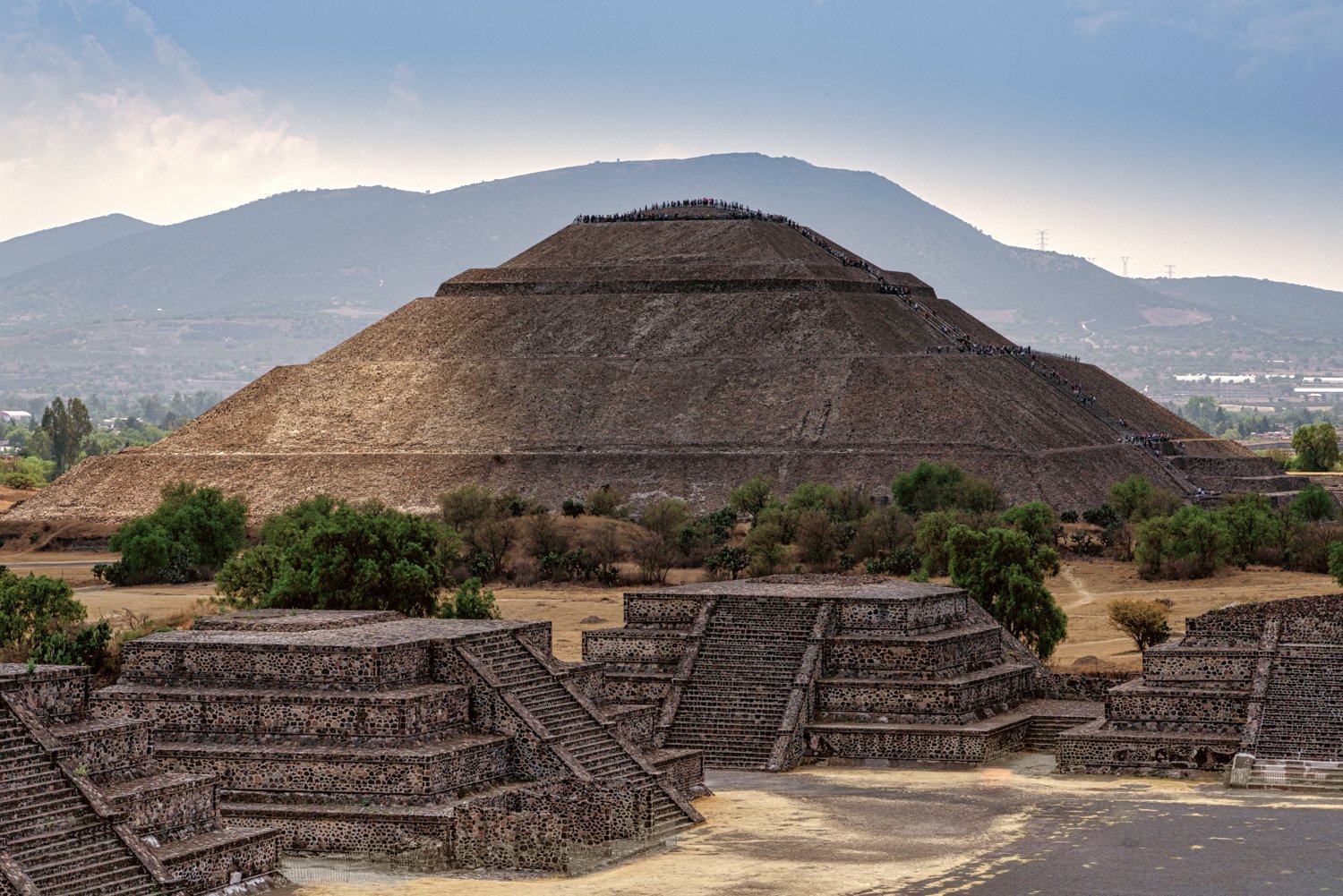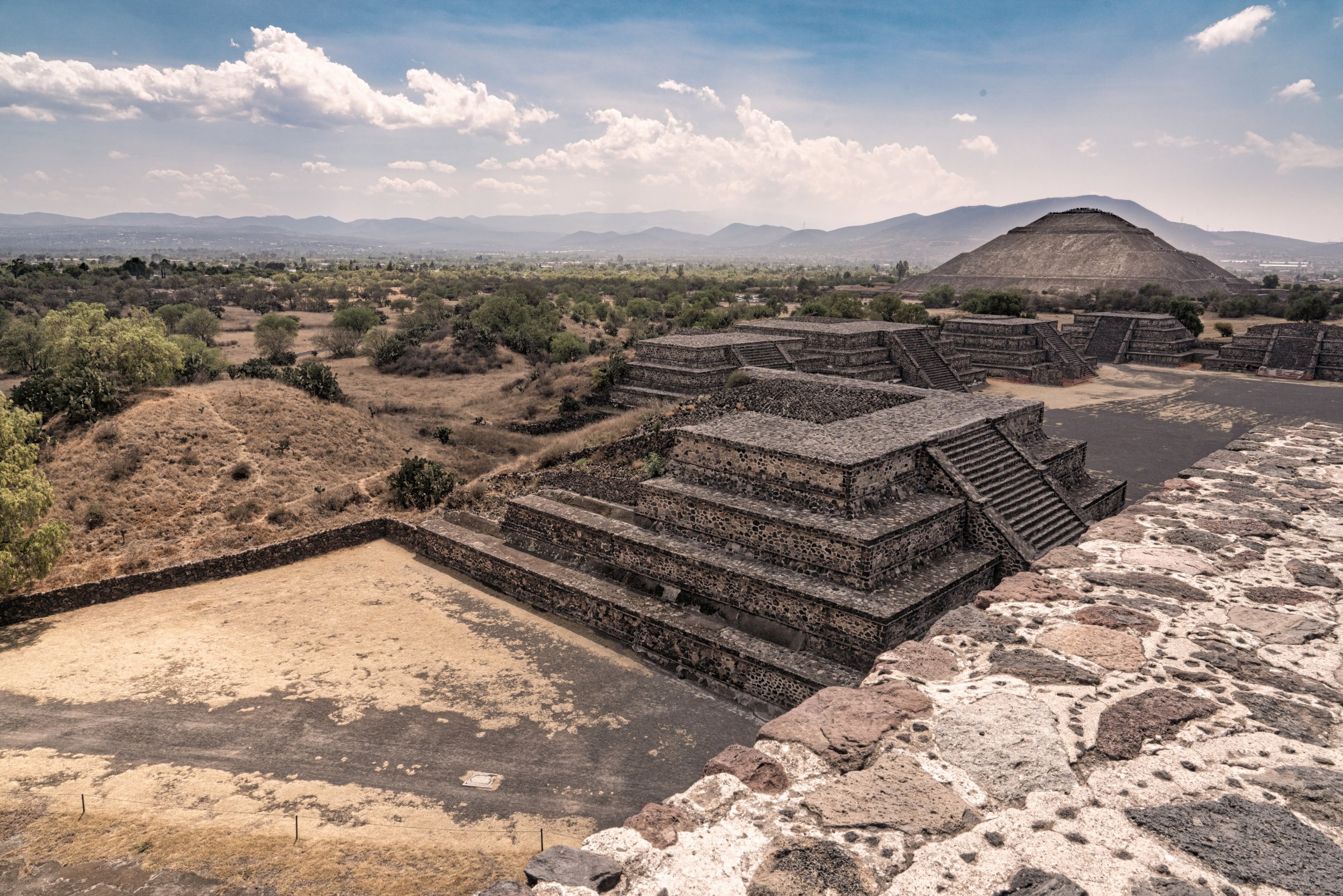
The Basin of Mexico
The Basin of Mexico, or the Valley of Mexico as it’s sometimes called, is a highland plateau located near the geographical centre of the country. The valley, which is ringed by mountains and volcanoes, saw the rise of several significant, indigenous cultures over time and is today the site of Mexico City. The Tlatilco culture, Teotihuacan, the Toltecs, and eventually the Aztec culture all rose to prominence and flourished in the lee of it’s mountains and by the shores of its lakes.
At about the same time the Roman empire was spreading across Europe and into Western Asia, the Basin of Mexico was one of the most densely populated areas on Earth. The physical remains of these cultures can still be found everywhere. Even today, when construction work is undertaken in the historic centre of Mexico City, workers often unearth the foundation stones of Tenochtitlan, precursor to today’s city and capital of the Aztec empire. I’ve had the chance to visit there several times and explore some of those remains, and to take some photos.
Teotihuacan, The Pyramid of the Sun.
Teotihuacan, The pyramid of the Sun with distant hills.
Teotihuacan, The Pyramid of the Moon from the Avenue of the Dead.
Teotihuacan, The Pyramid of the Sun from the modern town.
Teotihuacan, The House of the Butterflies. Courtyard.
Teotihuacan, The House of the Butterflies. Pillars.
Teotihuacan, The House of the Butterflies. Light and shadows.
Museum of Anthropology and History, Jaguar-shaped basin for receiving sacrificial human hearts.
Museo del Templo Mayor, Eagle Warrior Statue.
Museo del Templo Mayor, Coyolxauhqui.
Museum of Anthropology and History, an ancient skull.
Museum of Anthropology and History, Serpent Head,
Museum of Anthropology and History, Coatlique.
Museum of Anthropology and History, Xochipilli.
El Templo Mayor, House of the Eagles. Eagle Warriors.
Museum of Anthropology and History, Aztec Sun Stone.
Museum of Anthropology and History, Aztec deity.
Museum of Anthropology and History, Aztec sculpture.
Museum of Anthropology and History, Azec corn goddess.
Museo del Templo Mayor, a tzompantli.
Museum of Anthropology and History, an Olmec head.
Museum of Anthropology and History, Mictlantecutli.
Museum of Anthropology and History, The Water god.
Museum of Anthropology and History, The Creator (El Creador).
El Templo Mayor, the Chacmool.
El Templo Mayor, a serpent head.
























